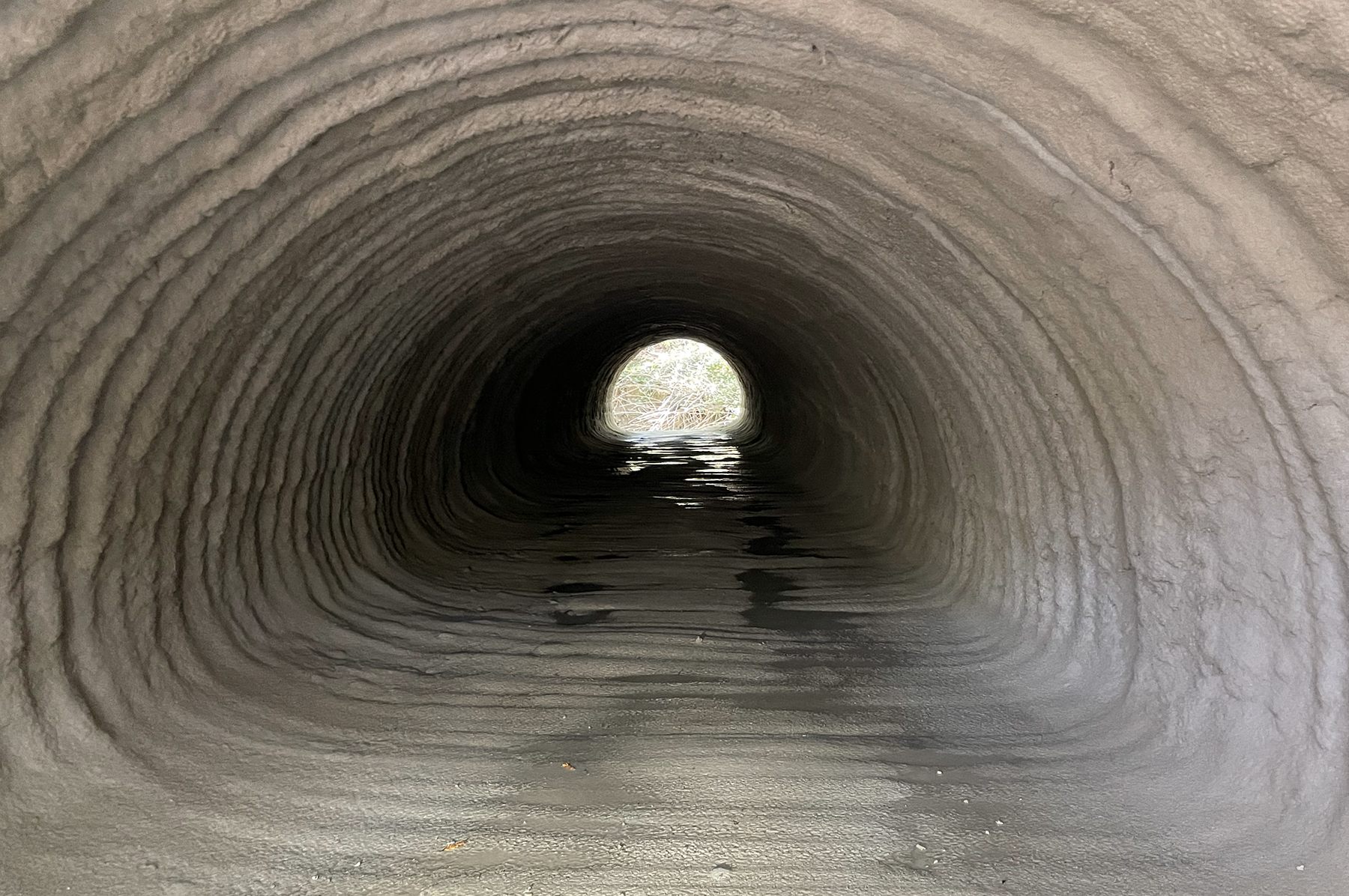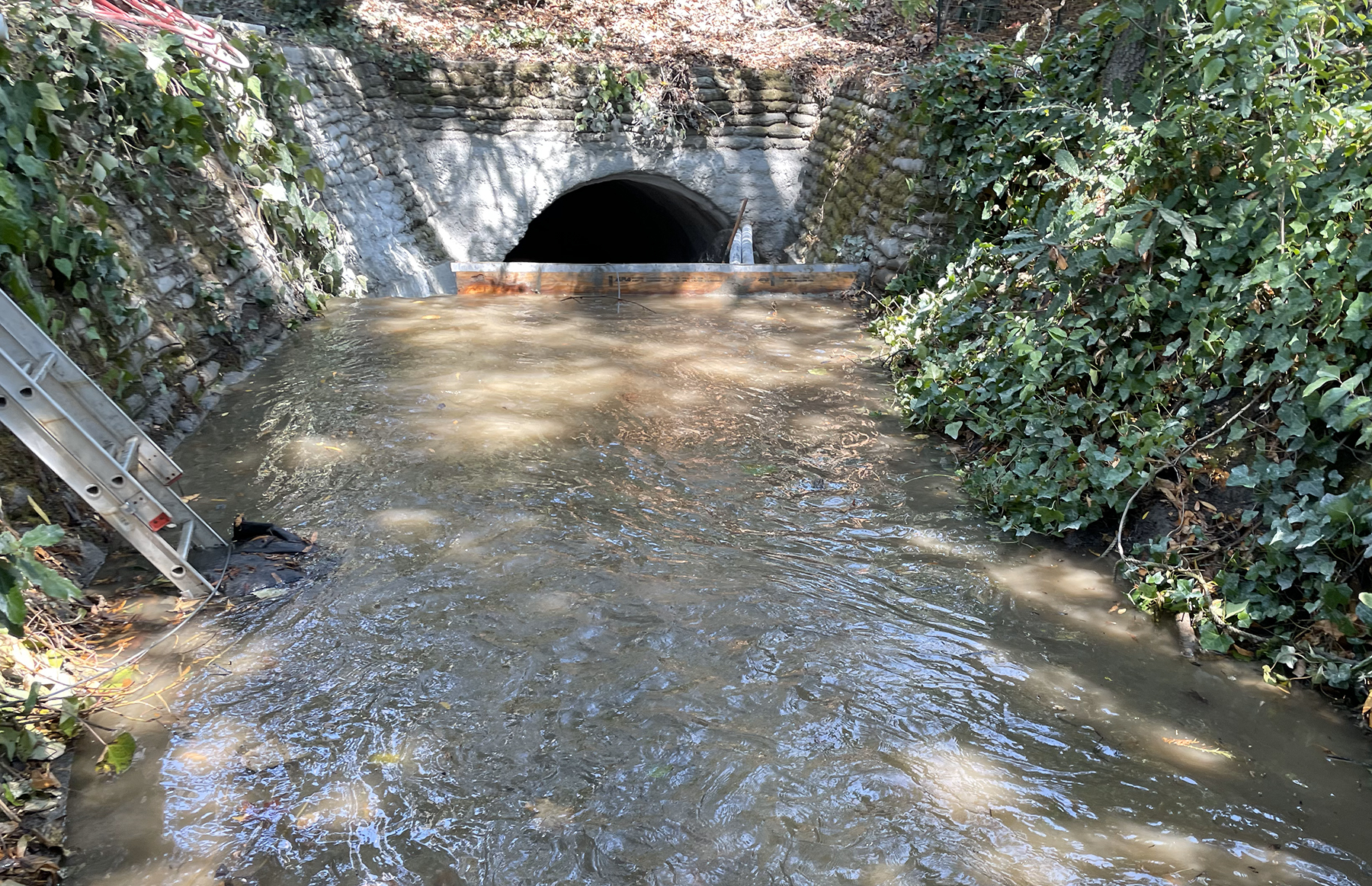By Kurt S. Chirbas Sr., P.E., CPESC
The city of Orinda, California, sits within the Diablo Mountain Range just 9 miles east of Oakland. Local roads wind through the rolling hills next to several large streams that run through the mountain range. These tributaries are fed by seasonal runoff from the mountains and residential areas and empty into the San Pablo Reservoir and the Upper San Leandro Reservoir.
Further reading:
- Glass fiber-reinforced polymers tested to rehabilitate underpass culverts
- North Texas creek reconfigured to follow nature's original design
- A dwindling water supply caused by reservoir sedimentation troubles engineers
In the 1940s and 1950s, several large culverts, made from corrugated metal pipe, were installed to take these environmentally sensitive streams under the roads. But these conveyances are showing signs of fatigue; some even have inverts – the lowest point in the cross section of the pipes – that are completely corroded. Recognizing this corrosion as an issue that had to be corrected, city officials contacted international engineering firm HDR Inc. to evaluate which technologies offered the most feasible repair option. Only trenchless approaches were considered, as they are proved to eliminate traffic and pedestrian access issues and deliver minimal disturbance to creek beds and vegetation.

HDR compared slip lining, cured-in-place pipe, and spray-applied geopolymer mortar – and ultimately recommended the geopolymer mortar option based on its ability to minimize environmental impacts. Specifically, geopolymer mortar was expected to have the least impact on the surrounding area while also making it possible to reinstate the flow of water through the culverts immediately after installation. It also maintained the hydraulic capacity of the rehabilitated culverts and had a lower overall cost of installation.
Among the project’s challenges were the fact that work could take place only during the non-rainy season, April 15-October 15 – a regulation put in place by the California Regional Water Quality Control Board to minimize impact to waterways. The project first had to obtain a permit from the water board. This permit required ecotoxicity data on the selected material for the rehabilitated culverts to determine the time required before the stream could start flowing again. Ecotoxicity data determines the potential acute and chronic effects that the culvert lining material might have on local aquatic species, which included water fleas, rainbow trout, fathead minnows, and bluegills. The water used for the test is called leachate water, which involves water that has been in contact with the cured material surface of the culverts for a certain period of time under extreme low-water volume.

National Plant Services, a Carylon Corp. company based in Long Beach, California, was selected as the contractor to apply the chosen material: GeoSpray 61 manufactured by GeoTree Solutions, of Lafayette, Colorado. The formulation of the geopolymer mortar featured a minimum of 70% pozzolanic materials from the group that includes silicone dioxide, ferric oxide, aluminum oxide, and magnesium oxide as measured by X-ray fluorescence per ASTM C114 to form a network of inorganic molecules linked by covalent bonding. This approach provides better performance than standard portland cement mortars.
The geopolymer mortar was selected because its manufacturer had tested the material and determined that water flows could be reinstated after only 2-4 hours of curing. The product is also NSF 61 certified for drinking water standards and features a high flexure strength, which means the installed thickness of the material could be reduced – essentially, by half – compared with other materials and systems on the market.
In preparation for the rehabilitation work, performed in July 2023, the summer creek flow was diverted at each site through a gravity flow bypass pipe without the need for a pumping system, which might have negatively affected aquatic life. The bypass pipes did not change the flow of water up or down the streams during the rehabilitation, did not increase turbidity, or increase erosion from the discharge of the bypass pipes. The bypasses were installed directly through the pipes being rehabilitated, which allowed the gravity flow to occur.
The city hired LSA, a consulting firm from Point Richmond, California, specializing in the California Environmental Quality Act, to have a wildlife biologist on-site during the construction work to verify that the bypass and the installation of the geopolymer mortar material was not affecting wildlife.

Daniel Solano, a National Plant Services manager, explained that at each site “a temporary dam was installed using gravel-filled geotextile bags and plastic. This directed the water from the upstream side of the culvert into the bypass pipe. The bypass pipe exited the culvert and drained into the creek downstream.”
The project consisted of three culverts on different tributaries within Orinda, each site roughly a mile apart from the others. One site featured an arch culvert pipe measuring 72 inches by 110 inches, while the other two culvert pipes measured 60 inches and 66 inches in diameter, respectively. All mixing and pumping operations for applying the geopolymer mortar were carried out at the various pipe locations on a spill control pad within a tarp tent to minimize dust release. Each site also featured a disposal container next to the mixing area that was used in cleaning the hoses that conveyed the material into the culvert to the spray head used to apply the material.

A team of civil engineers from GeoTree calculated the thickness of geopolymer mortar required to adequately line each culvert. For the 60- and 66-inch pipes, for instance, the thickness applied was 1.5 inches while the arch culvert required 1.75 inches of the material. Because the invert was partially deteriorated in two of the culverts (the 66-inch pipe and the arch culvert), these spaces were filled with additional geopolymer material to eliminate the potential for water movement under the pipe, which could cause issues later. All the geopolymer was hand-sprayed except for the final half-inch, which was spin-casted using a centrifugal application system.
The construction equipment – consisting of an air compressor, generator, and portable mixing/pump unit – was carefully staged so that the operations would not affect the normal traffic flow. For the 60- and 66-inch pipes, for instance, the staging areas measured 10 feet by 75 feet along the streets near the two culverts. For the arch culvert, however, the equipment had to be staged along the side of a residential driveway, with work scheduled only between 8 a.m. and 4 p.m. to avoid disruption to the homeowners. From mobilization to completion, the work at each culvert took just five days.
The city of Orinda liked the outcome of this project well enough that officials plan to use the geopolymer mortar again to rehabilitate a second set of culverts starting in July.
Kurt S. Chirbas Sr., P.E., CPESC, is the western regional sales manager in the Sacramento, California, office of GeoTree Solutions.
This article is published by Civil Engineering Online.



